Nov 30, 2021
Visit UNESCO Sites Galore and More in Historical Shingu
Some people travel around the world to visit UNESCO World Heritage Sites. Some people will never visit one in their entire life. But with a single trip to Shingu in Wakayama Prefecture, you can be surrounded by them all day!
About Shingu
Situated near the southern tip of the Kii Peninsula in Wakayama Prefecture, facing out into the Pacific Ocean with a mountain range at its back, Shingu is nestled in natural beauty, making it a perfect day out for nature lovers. This area is also the traditional home of the Kumano faith, rooted in the worship of nature; a pre-historic belief system followed and passed down for centuries.
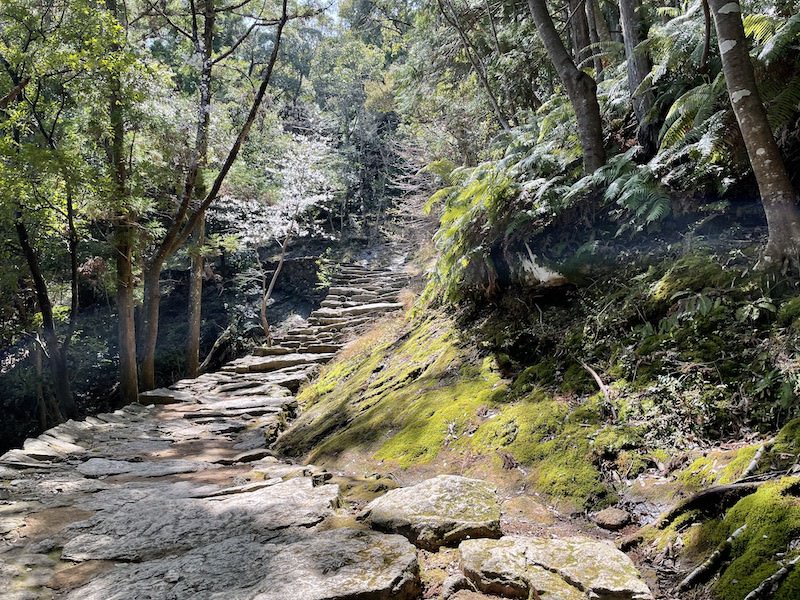
Shingu first appeared in the 8th-century book “Kumano Kannomura,” in which reportedly 2200 years ago, Jofuku, a Chinese scholar who served the First Qin Emperor of China, came to Shingu in order to hunt out the elixir of life. It is also at the heart of the Kumano Kodo trail, a network of ancient footpaths through the forest that pilgrims would follow to pay their respects at the Kumano Sanzan, the three main shrines of the Kumano faith.
Shingu Today
Today, Shingu is a small coastal city of approximately 30,000 people that remains popular with travelers to this day. Many of these will visit to travel the Kodo trail (and if you are interested in giving that a try, check out our article on that here).
But if you are not in the mood for traipsing around trails, the town itself is still so captivating that the whole area is designated a UNESCO World Heritage Site, and has much to offer it: stunning views, delicious food, a castle, and historically significant shrines.
Kumano Hayatama Haisha
One of the aforementioned Kumano Sanzan shrines, Hayatama Haisha, has remained on the Kumano riverbank since at least the 12th century. Though the buildings themselves have been recently rebuilt, it homes religious artifacts that date back to the 3rd century, showing that the shrine has held an important place in Japanese folklore for much longer than even the shrine has stood.
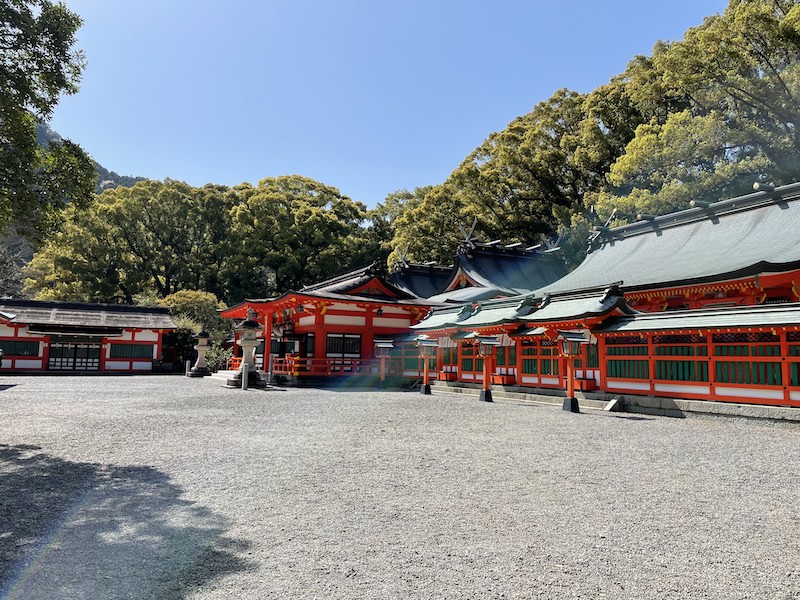
As well as the shrine – and an 800 year-0ld tree that is also considered a deity – within Hayatama Taisha’s Treasure Hall, you can find offerings brought by pilgrims along the Kumano trail, including more than a dozen national treasures amongst this small, though impressive, museum.
Where: 1 Banchi Shingu, Wakayama (map)
Website: kumanohayatama.jp
Kamikura-jinja Shrine
Nestled halfway up Mt. Gongenyama (which is a pretty decent mountain to hike, for those so inclined), Kamikura-jinja Shrine is the site upon which the original Hayatama Haisha once stood.
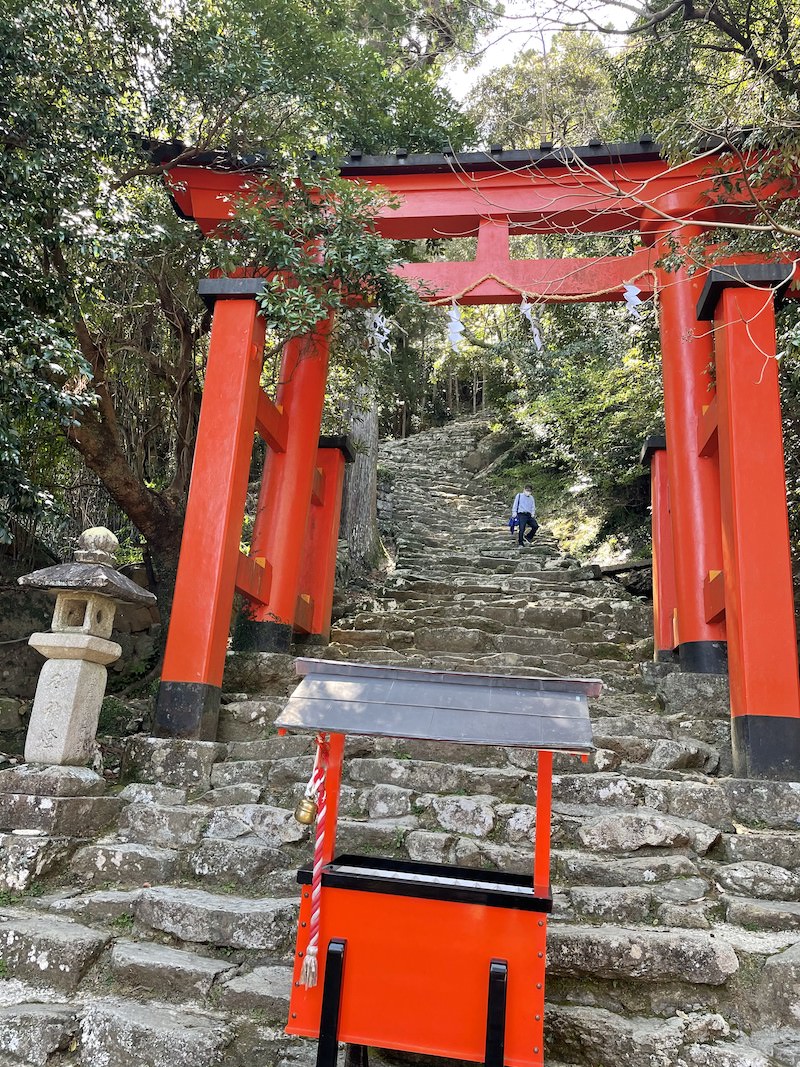
Climbing up the 500 steep stone steps brings you to the shrine itself, in which the Shinto God Kumano-sansho-okami resides. He’s picked a good place to stop, as the views of the town below and the ocean stretching out beyond are absolutely stunning. The stairs are so steep they can give you a touch of vertigo looking down them; we saw a terrified child climbing down by shuffling on his rear end, so one shudders to think of the boys and men that take part in February’s Oto Fire Festival, which requires running up and down the steps carrying spitting torches.
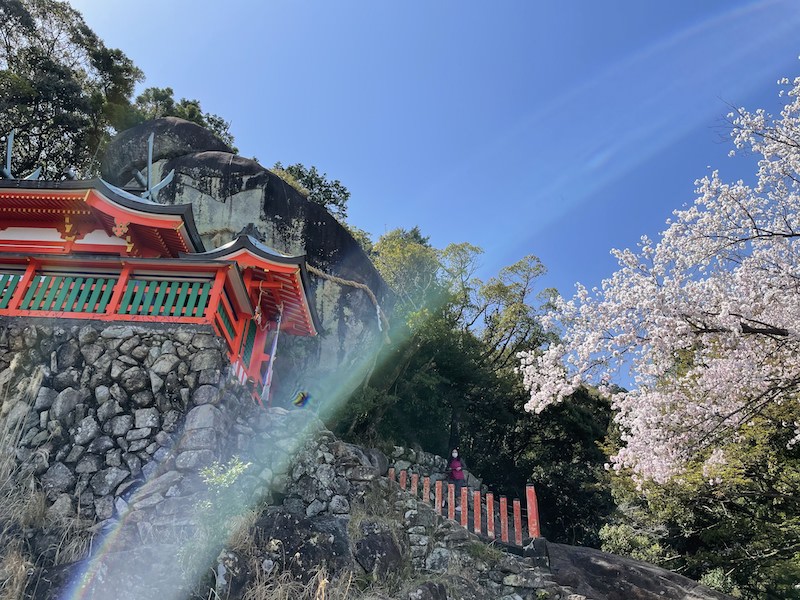
For Japanese history buffs or spiritualism buffs, the shrine holds great significance, as the immense boulder, named Gotiboki, that hangs over Kamikura-Jinja is said to be the very stone in the Shinto creation myth, the kami [gods] first descended to Japan.
Where: 1 Chome-13-8 Kamikura, Shingu, Wakayama (map)
Website: kumanohayatama.jp
Shingu Castle Ruins
Though nothing remains of Shingu Castle following its demolition in the Meiji era (1868-1912), that it was still listed as one of Japan’s Top 100 Castles in 2017 speaks volumes for its one-time importance and the beauty of the area in which it was set.
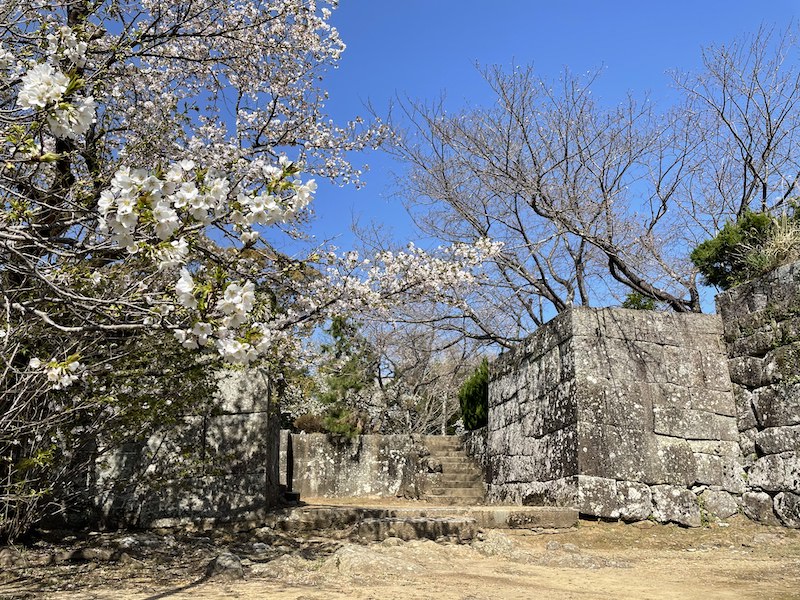
Once home to Tankaku Hime, the daughter of famed samurai warrior Minamoto no Tameyoshi, Shingu Castle once stood as a testament to the historic prosperity of the area. Today it remains a lovely spot to walk around, have a picnic, or gaze out at the beautiful panoramic views, with the river to the north and the ocean to the south.
Where: Wakayama, Shingu, Tankaku 3-chome (map)
Website: shinguu.jp
Asuka Shrine
At the foot of Mt. Horai, Asuka-jinja is on the southern side of the mouth of the Kumano River. It is said to have been the spot upon which Chinese alchemist and explorer Jofuko (or Xu Fu) first landed on his quest to discover the elixir of life.
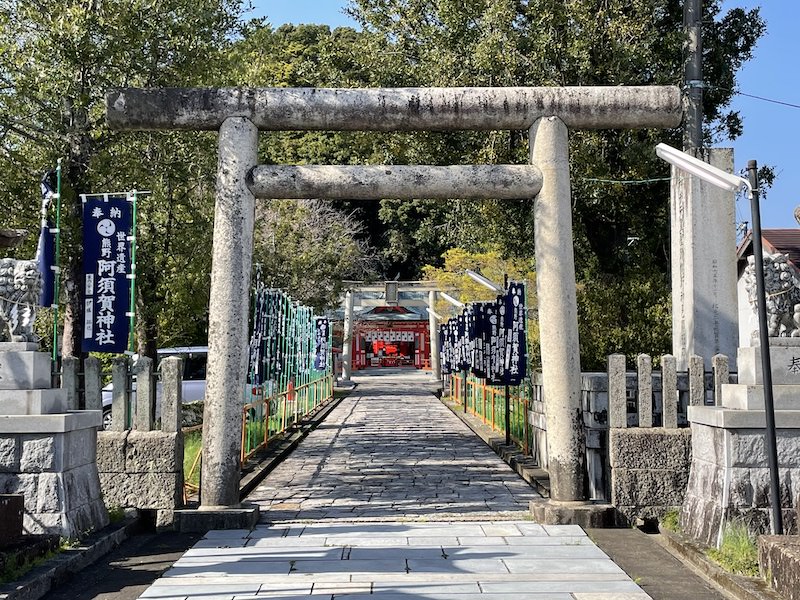
Said to have been built in 423 BCE to commemorate this event, excavations of a pit house from the Yayoi period have been discovered upon the site. Asuka-jinja may not be the largest of shrines, though that did not stop it being listed as a World Heritage site in 2016
Where: 1 Chome-2-25 Asuka, Shingu, Wakayama (map)
Website: wakayama-jinjacho.or.jp
Getting to, and around, Shingu
Shingu Station is served by the JR Nanki Line from Nagoya Station, though it is cheaper to take the Kintetsu Line to Matsusaka and change to the JR Kisei Line there. It is cheaper still to take a Meitetsu Bus from Nagoya.
To best see all of Shingu’s sites in one day, it is advised to rent bicycles from the tourist office at Shingu Station, though taxis are available.
Images: By Mark Guthrie (Own Work)


About the author